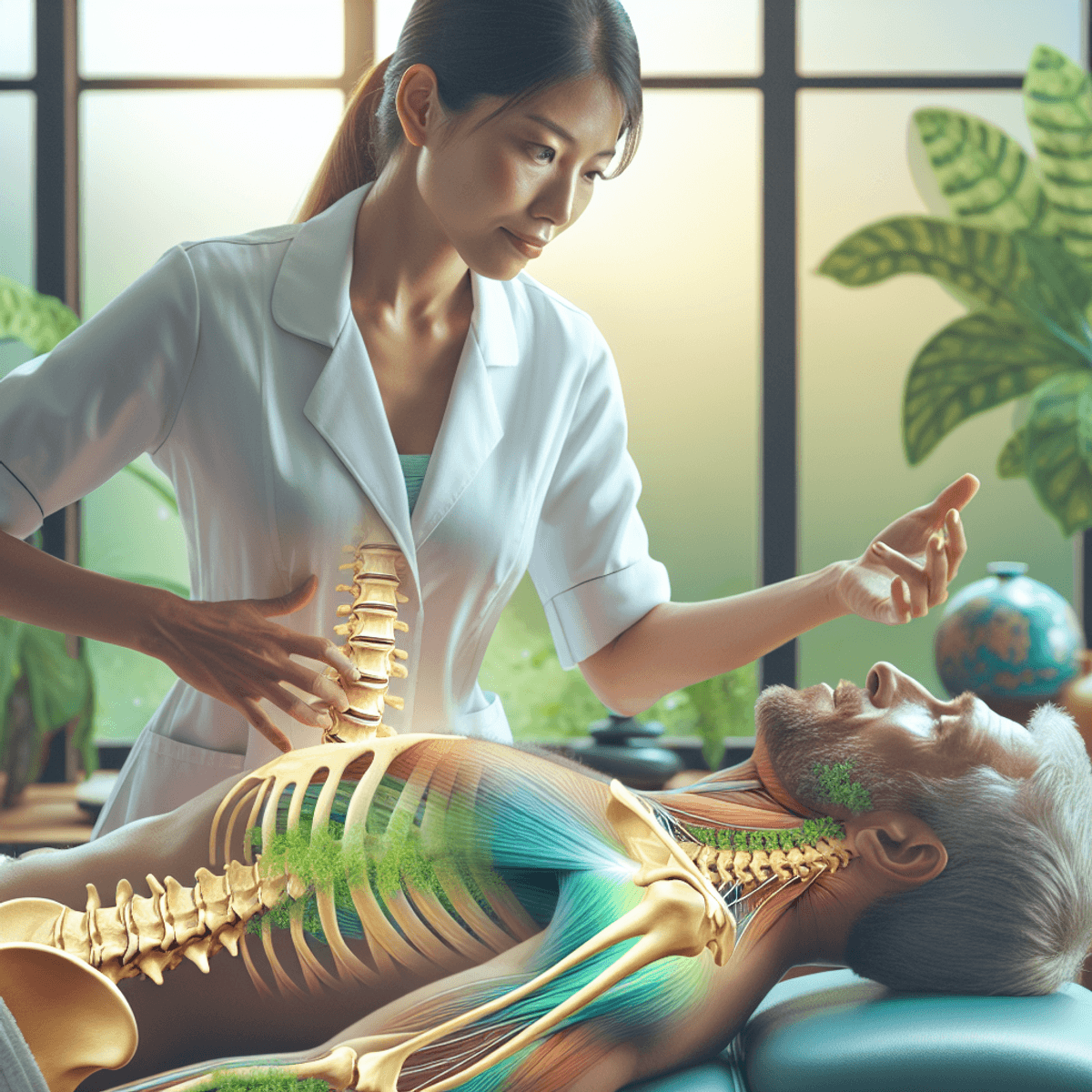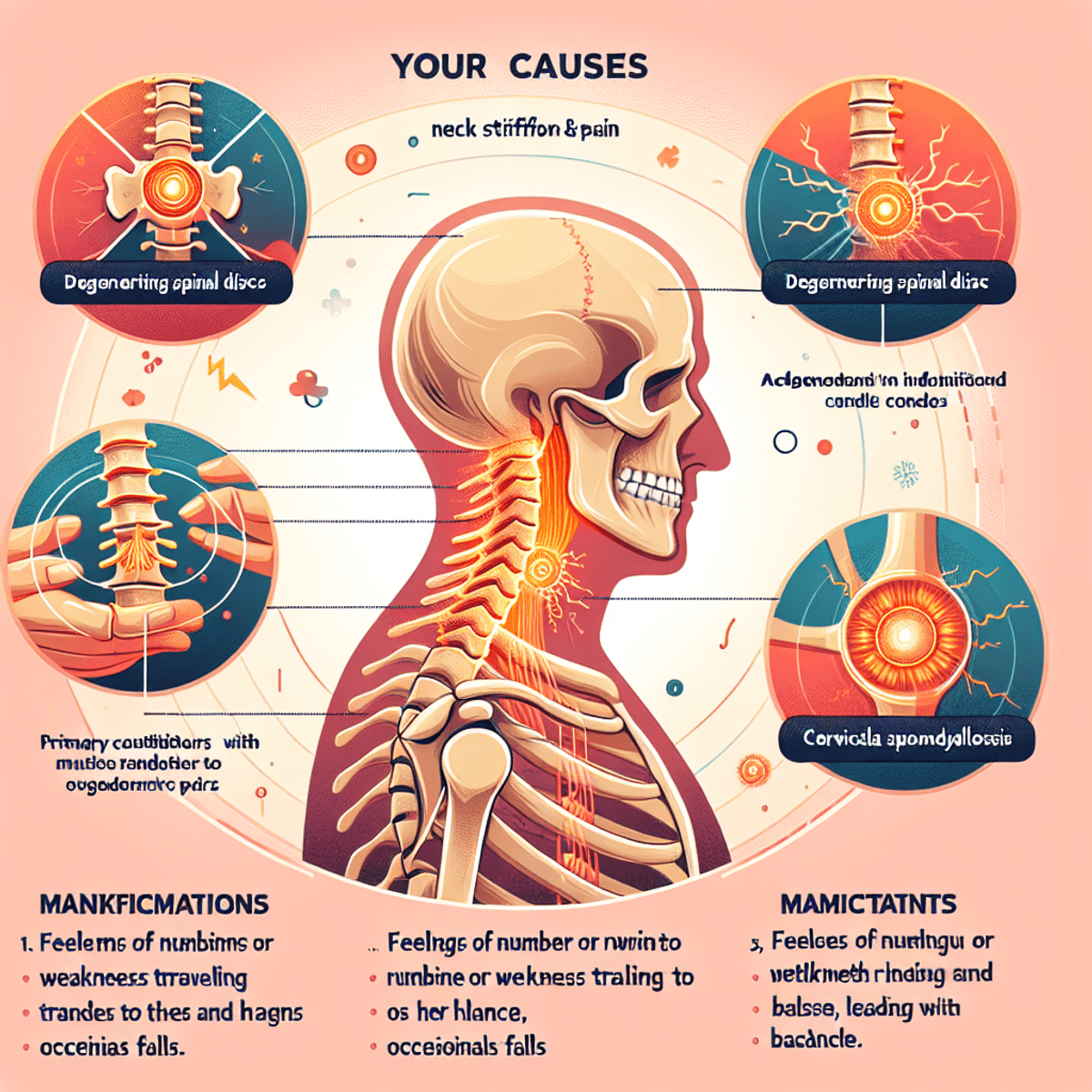Services
Cervical Spondylosis Treatment
Cervical Spondylosis Treatment by Ayurveda and Naturopathy
Introduction
Cervical spondylosis is a degenerative condition affecting the cervical spine, leading to neck pain, stiffness, headaches, and sometimes even numbness or weakness in the arms and hands. This condition often results from age-related wear and tear on spinal discs but can be worsened by lifestyle factors such as poor posture and sedentary habits.
Key takeaway: Ayurveda and Naturopathy offer a holistic approach to treating cervical spondylosis. These natural therapies aim to balance the body’s energies, promote overall wellness, and provide relief from symptoms. At Disha Arogya Dham, an integrated approach using Ayurvedic herbal formulations and naturopathic treatments helps manage cervical spondylosis effectively.
Understanding Cervical Spondylosis
Cervical spondylosis, commonly known as neck arthritis, is a degenerative condition affecting the cervical spine. This condition primarily results from age-related wear and tear on the spinal discs in the neck.
Symptoms of Cervical Spondylosis
- Neck Pain: Persistent or intermittent pain in the neck area.
- Neck Stiffness: Difficulty in moving the neck due to stiffness, often worse after periods of inactivity.
- Headaches: Often starting at the back of the head and radiating forward.
- Numbness or Weakness: Feelings of numbness or weakness in the arms, hands, or fingers.
- Balance Issues: Difficulty maintaining balance, occasionally leading to falls.

Causes of Neck Stiffness and Pain
Age-related wear and tear are primary contributors to cervical spondylosis. Over time, spinal discs lose their hydration and elasticity, which leads to disc degeneration. This degeneration can cause:
- Bone Spurs: Bony growths that develop along the edges of bones.
- Herniated Discs: When inner material of a spinal disc pushes through a crack in its outer shell.
- Stiff Ligaments: Ligaments can stiffen with age, making the neck less flexible.
Lifestyle Factors Contributing to Cervical Spondylosis
Several lifestyle factors can exacerbate this condition:
- Poor Posture: Habitual poor posture strains the neck muscles and spine.
- Sedentary Lifestyle: Lack of regular exercise weakens muscles that support the cervical spine.
- Repetitive Neck Movements: Jobs or activities involving repetitive neck movements may increase wear and tear.
Understanding these symptoms and causes is crucial for managing cervical spondylosis effectively.
Ayurvedic Treatment for Cervical Spondylosis
1. Herbal Formulations in Ayurveda
Ayurveda uses the power of nature to treat health problems, including cervical spondylosis. Various herbs are used in Ayurvedic medicines for neck pain, each with its own benefits.
Key Herbs and Their Benefits
- Ashwagandha: Known for its ability to help the body cope with stress, Ashwagandha also reduces inflammation. It’s great for neck pain because it relaxes muscles and improves nerve function, making it useful for treating neck stiffness.
- Turmeric: Famous for its strong anti-inflammatory effects, Turmeric is a common ingredient in herbal remedies for neck stiffness. Curcumin, the main compound in Turmeric, eases pain by decreasing swelling around the affected spinal discs.
- Guggul: This resin extract has anti-inflammatory and pain-relieving properties. Guggul supports joint health and alleviates symptoms of cervical spondylosis, making it a popular choice in Ayurvedic treatments.
- Nirgundi: Used as an oil or paste, Nirgundi effectively relieves pain and inflammation. It improves mobility by reducing stiffness, providing relief from discomfort caused by cervical spondylosis.
- Rasnadi Churna: This herbal powder mix is effective in treating musculoskeletal disorders. It eases pain and enhances circulation, promoting overall joint health.
Herbal Preparations
These herbs are often combined into specific formulations tailored to individual needs. Some common preparations include:
- Decoctions (Kwath): Herbal decoctions are prepared by boiling herbs in water to extract their medicinal properties. These are then consumed to help reduce inflammation and pain.
- Medicated Oils: Oils infused with herbs like Ashwagandha and Nirgundi are used for external application. Massaging these oils onto the affected area can provide immediate relief from pain and stiffness.
- Tablets and Capsules: For ease of consumption, many herbal remedies are available in tablet or capsule form, ensuring consistent intake of beneficial compounds.

Effectiveness of Herbal Solutions
The comprehensive approach of using multiple herbs ensures a well-rounded treatment that addresses various symptoms of cervical spondylosis such as pain, stiffness, and inflammation. These herbal solutions not only provide symptomatic relief but also promote long-term health by addressing underlying causes.
Integrating these herbal formulations into your routine can significantly improve your quality of life if you suffer from cervical spondylosis. Combining these treatments with other Ayurvedic practices amplifies their effectiveness, making it a robust system for managing this condition.
Cervical Spondylosis Treatment by Ayurveda at Disha Arogya Dham offers a complete herbal solution tailored specifically to enhance neck health through natural means.
2. Panchakarma: Detoxification Process in Ayurveda
Panchakarma is a cornerstone of Ayurvedic treatment, offering a comprehensive detoxification process. This method not only cleanses the body but also rejuvenates it, making it particularly effective for conditions like cervical spondylosis.
Abhyanga and Swedana are two specific techniques within Panchakarma that can significantly alleviate neck discomfort:
- Abhyanga (Therapeutic Massages): This technique involves the use of warm herbal oils to perform therapeutic massages. The oils used, often infused with herbs like Ashwagandha and Turmeric, have anti-inflammatory and analgesic properties. Abhyanga helps in enhancing blood circulation, reducing muscle stiffness, and providing relief from neck pain.
- Swedana (Steam Therapy): Following Abhyanga, Swedana or steam therapy is administered to further relax the muscles and open up the pores. This technique aids in the deeper penetration of the herbal oils used during Abhyanga. The steam helps in relieving stiffness and improving mobility in the cervical region.
By combining these therapies, Panchakarma offers a holistic approach to treating cervical spondylosis. The synergy between herbal solutions for neck stiffness and detoxification methods ensures a complete healing experience.
Image source: Disha Arogya Dham
Panchakarma at Disha Arogya Dham integrates these techniques seamlessly into their treatment plans, offering an effective solution for those suffering from cervical spondylosis.
3. Dietary Changes for Neck Pain Relief in Ayurveda
Adopting an anti-inflammatory diet is crucial for managing symptoms of cervical spondylosis. Ayurvedic principles stress the importance of consuming foods that reduce inflammation and support joint health. This involves incorporating a variety of fruits, vegetables, and healthy fats into your daily meals.
Key dietary recommendations include:
- Fruits and Vegetables: These are rich in antioxidants which help in reducing inflammation. Berries, leafy greens, and cruciferous vegetables like broccoli and cauliflower are particularly beneficial.
- Healthy Fats: Omega-3 fatty acids found in flaxseeds, chia seeds, and walnuts are known to have potent anti-inflammatory properties. Including these can aid in alleviating neck pain and stiffness.
- Spices and Herbs: Utilizing Ayurvedic medicines for neck pain such as Ashwagandha and Turmeric can significantly improve symptoms. Ashwagandha benefits for neck pain include its adaptogenic properties that help manage stress-related tension. Turmeric’s anti-inflammatory properties are well-documented and can be easily incorporated into meals.
- Hydration: Staying well-hydrated is essential for maintaining the elasticity of spinal discs. Herbal teas like ginger or turmeric tea offer additional anti-inflammatory benefits.
By following these dietary guidelines, you can support your body’s natural healing processes and potentially reduce the severity of cervical spondylosis symptoms. For those seeking a complete herbal solution, Disha Arogya Dham offers specialized nutritional counseling tailored to individual needs, ensuring a comprehensive approach to managing this condition.
4. Yoga and Physical Therapy in Ayurvedic Practice
Incorporating yoga into your daily routine can significantly improve flexibility and strength in the neck area. Gentle yoga poses are particularly beneficial for those experiencing neck pain due to cervical spondylosis.
Key Poses for Neck Flexibility:
- Bhujangasana (Cobra Pose): Enhances spinal flexibility and strengthens the back muscles.
- Marjariasana (Cat-Cow Stretch): Improves mobility in the spine, easing stiffness in the neck region.
- Setu Bandhasana (Bridge Pose): Strengthens the neck muscles and promotes better posture.
- Ardha Matsyendrasana (Half Spinal Twist): Provides a gentle stretch to the cervical spine, alleviating tension.
Benefits of Yoga for Cervical Spondylosis:
- Enhanced flexibility: Regular practice helps maintain and improve range of motion in the neck.
- Strengthened muscles: Targeted poses strengthen the muscles supporting the cervical spine, reducing pain.
- Stress relief: Yoga promotes relaxation, which can alleviate stress-related muscle tension.
Combining these yoga practices with Ayurvedic medicines for neck pain, such as Ashwagandha for its strengthening properties and Turmeric for its anti-inflammatory benefits, provides a holistic approach to managing cervical spondylosis. Disha Arogya Dham offers a complete herbal solution, integrating these techniques to ensure comprehensive care.
Naturopathic Treatment for Cervical Spondylosis
1. Hydrotherapy: Water Treatments for Pain Relief
Hydrotherapy, or water therapy, is a powerful naturopathic treatment for cervical spondylosis. This natural remedy involves using water in various forms and temperatures to relieve pain, reduce muscle spasms, and promote overall well-being.
Benefits of Hydrotherapy in Managing Muscle Spasms:
- Warm Water Baths: Soaking in a warm water bath can help relax the neck muscles, providing significant relief from spasms. The warmth increases blood flow to the affected area, easing stiffness and reducing pain.
- Contrast Showers: Alternating between warm and cold water can stimulate circulation and reduce inflammation. This technique can be particularly effective for alleviating muscle spasms associated with cervical spondylosis.
- Hydromassage: Incorporating jets of water in a therapeutic massage helps target specific areas of discomfort. Hydromassage chairs or whirlpool baths can provide targeted relief by gently massaging the neck and shoulder region, enhancing relaxation and pain reduction.
- Aquatic Exercises: Gentle exercises performed in a pool can improve flexibility and strength without putting undue strain on the cervical spine. The buoyancy of water supports the body, making movements easier and less painful.

Key Techniques in Hydrotherapy:
- Warm Compresses: Applying warm compresses to the neck area can soothe tense muscles and improve mobility. This simple yet effective method can be done at home using a warm towel or heating pad.
- Cold Packs: Using cold packs helps reduce inflammation and numb acute pain. Alternating between cold packs and warm compresses may provide optimal results for managing muscle spasms.
- Underwater Massage: Specialized hydrotherapy facilities often offer underwater massage treatments where therapists use water jets to apply pressure to specific points on the body. This technique can effectively relieve deep-seated tension in the neck muscles.
Hydrotherapy’s Overall Impact:
Regular hydrotherapy sessions can lead to long-term improvements in neck mobility and reduction in pain levels for those suffering from cervical spondylosis. Combining hydrotherapy with other naturopathic treatments, such as nutritional counseling and physical manipulation techniques, can create a comprehensive approach to managing this condition.
By integrating these methods into your routine, you can experience significant relief from symptoms while promoting overall joint health through natural means.
2. Nutritional Counseling Strategies in Naturopathy
Nutritional counseling is essential for managing cervical spondylosis through naturopathy. Practitioners create personalized dietary plans to support joint health and reduce inflammation. Here are some key components of these dietary strategies:
- Anti-inflammatory Foods: Focus on eating foods high in omega-3 fatty acids, like flaxseeds, walnuts, and fatty fish, which help reduce inflammation.
- Antioxidant-Rich Fruits and Vegetables: Include berries, leafy greens, and other colorful vegetables to fight oxidative stress and promote overall joint health.
- Hydration: Encourage drinking enough water to keep the spinal discs nourished and flexible.
- Avoiding Processed Foods: Cut down on processed foods and added sugars that can worsen inflammation.
Nutritional counseling for joint health also involves teaching patients about the importance of a balanced diet, prioritizing whole foods over supplements when possible. Natural remedies for cervical spondylitis often include specific nutrients like Vitamin D and calcium to strengthen bones and joints.
At Disha Arogya Dham, these principles are integrated into a holistic treatment plan for cervical spondylosis, combining Ayurvedic wisdom with naturopathic dietary guidance to offer comprehensive care.
3. Physical Manipulation Techniques Used by Naturopaths
Physical manipulation is important in naturopathy for treating cervical spondylosis. These techniques focus on restoring proper alignment and mobility to the cervical spine, aiming to relieve pain and improve overall function.
Key techniques include:
- Chiropractic Adjustments: These adjustments correct misalignments in the vertebrae, relieving pressure on nerves and reducing muscle spasms. Chiropractic care is especially effective for neck pain and stiffness associated with cervical spondylosis.
- Osteopathic Manipulative Treatment (OMT): This involves gentle stretching, pressure, and resistance techniques to enhance the body’s natural healing processes. OMT can improve blood flow, reduce inflammation, and promote flexibility in the cervical region.
- Massage Therapy: Regular therapeutic massages help relax tense muscles, improve circulation, and reduce pain. Techniques like deep tissue massage or myofascial release target specific areas of discomfort.
- Trigger Point Therapy: By applying pressure to specific points on the body causing pain, this therapy releases constricted muscles and improves range of motion.
These physical manipulation techniques offer a natural remedy for managing cervical spondylitis symptoms effectively. Naturopathic practitioners customize these therapies to individual needs, ensuring comprehensive care that aligns with holistic treatment principles.
Disha Arogya Dham’s Comprehensive Approach to Cervical Spondylosis Treatment Using Ayurveda and Naturopathy Together
Disha Arogya Dham (DAD) is a leading center that specializes in providing integrated Ayurvedic and naturopathic therapies for individuals with cervical spondylosis. The center focuses on offering holistic treatment options that address both the symptoms and root causes of this degenerative condition.
Combining Therapies for Better Results
At DAD, we use a combination of different therapeutic methods to achieve the best outcomes over time:
- Ayurvedic Herbal Formulations: We use herbs like Ashwagandha, Turmeric, and Shallaki known for their anti-inflammatory and pain-relieving properties.
- Panchakarma Therapies: We include detoxification techniques such as Abhyanga (therapeutic massages) and Swedana (steam therapy) to relieve neck discomfort.
- Targeted Exercises/Yoga Practices: We incorporate gentle yoga poses specifically designed to improve flexibility and strength in the neck area.
- Nutritional Guidance/Food Supplements: We emphasize an anti-inflammatory diet rich in fruits, vegetables, and healthy fats to support overall joint health.

Tailoring Treatment Plans for Each Patient
At DAD, we believe in customizing treatment plans based on individual needs. Our experienced practitioners conduct thorough consultations with each patient to assess their specific condition. This personalized approach ensures that the treatments are tailored to effectively manage cervical spondylosis without any side effects or complications.
Positive Feedback from Patients
Our patients often share positive feedback about their experiences with our holistic approach. They highlight how our treatments have helped them manage their condition:
“After struggling with neck pain for years, I found relief through the comprehensive treatments at Disha Arogya Dham. The personalized care and natural therapies have made a significant difference in my life.” – Patient Testimonial
This kind of feedback reinforces our commitment to providing safe and effective alternatives to long-term medication or surgical interventions.
Research Supporting the Effectiveness of Ayurvedic & Naturopathic Treatments
Scientific research supporting the effectiveness of Ayurvedic and naturopathic treatments for cervical spondylosis is limited but promising. Clinical trials have demonstrated significant improvements among participants receiving either modality alone or in combination with standard care. These studies often measure pain reduction levels using validated scales, showing notable decreases in pain and discomfort.
For instance, some studies highlight the effectiveness of Ayurvedic herbal formulations like Ashwagandha and Turmeric in reducing inflammation and pain. Similarly, Panchakarma therapies such as Abhyanga and Swedana have shown positive outcomes in enhancing mobility and easing neck stiffness.
Naturopathic approaches also hold promise. Hydrotherapy and nutritional counseling are validated through patient-reported outcomes indicating improved joint function and reduced muscle spasms. Physical manipulation techniques employed by naturopaths contribute to better spinal alignment, which can significantly alleviate symptoms of cervical spondylosis.
“Clinical trials validating effectiveness claims made about these alternative modalities provide a scientific basis for their use.”
Those struggling with persistent neck issues despite conventional approaches should explore the potential benefits offered by these natural remedies. The ancient wisdom systems of Ayurveda and Naturopathy have stood the test of time, offering safe yet powerful treatments that can be integrated into modern healthcare practices.
If you are seeking relief from cervical spondylosis, consider exploring the holistic approaches provided by Ayurveda and Naturopathy. The comprehensive treatments at Disha Arogya Dham (DAD) combine these ancient practices to offer effective and personalized care. Take a step towards a pain-free life by embracing these natural healing methods today!
Discover more from DAD Ayurveda
Subscribe to get the latest posts sent to your email.












